 | TODAY IN SCIENCE HISTORY NEWSLETTER - 18 JUNE |
| Feature for Today |
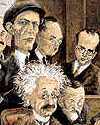 On 18 Jun 1999, Today in Science History began with the 18 June web page. So, today the site begins its fifteenth year! The site has been serving science history for a seventh of a century! Most entries in the 18 June page have extended descriptions - just click on the "More" arrows at the end of the summary paragraph. On 18 Jun 1999, Today in Science History began with the 18 June web page. So, today the site begins its fifteenth year! The site has been serving science history for a seventh of a century! Most entries in the 18 June page have extended descriptions - just click on the "More" arrows at the end of the summary paragraph.PLEASE! Take our site survey as a way to celebrate! It is rewarding to know the interests among the site visitors. Also, you may wish to send some e-mail feedback, with additional comments you may wish to pass along, by using your mail reader Reply button. |
| Book of the Day | |
| |
| Quotations for Today | |
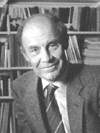 | "My interest in science was excited at age nine by an article on astronomy in National Geographic; the author was Donald Menzel of the Harvard Observatory. For the next few years, I regularly made star maps and snuck out at night to make observations from a locust tree in our back yard." |
 | "It was my science that drove me to the conclusion that the world is much more complicated than can be explained by science. It is only through the supernatural that I can understand the mystery of existence." |
 | "The fascination of any search after truth lies not in the attainment, which at best is found to be very relative, but in the pursuit, where all the powers of the mind and character are brought into play and are absorbed by the task. One feels oneself in contact with something that is infinite and one finds joy that is beyond expression in sounding the abyss of science and the secrets of the infinite mind." |
| QUIZ | |
| Before you look at today's web page, see if you can answer some of these questions about the events that happened on this day. Some of the names are very familiar. Others will likely stump you. Tickle your curiosity with these questions, then check your answers on today's web page. | |
| Births | |
 |  Allan Rex Sandage, born 18 Jun 1926, is a American astronomer who (with Thomas A. Matthews) discovered, in 1960, the first optical identification of a quasi-stellar radio source, a starlike object that is a strong emitter of radio waves. Although a strange source of radio emission, in visible light, it looked like a faint star. Yet this object was emitting more intense radio waves and ultraviolet radiation than a typical star. Allan Rex Sandage, born 18 Jun 1926, is a American astronomer who (with Thomas A. Matthews) discovered, in 1960, the first optical identification of a quasi-stellar radio source, a starlike object that is a strong emitter of radio waves. Although a strange source of radio emission, in visible light, it looked like a faint star. Yet this object was emitting more intense radio waves and ultraviolet radiation than a typical star.  What name was given to such a "quasi-stellar radio source"? What name was given to such a "quasi-stellar radio source"? |
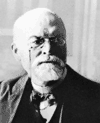 |  On 18 Jun 1845, a French scientist was born who was a physician, pathologist, and parasitologist. As a French military surgeon in Algeria, he discovered the parasite that causes human malaria in the red blood cells. He founded the medical field of protozoology, doing important work on other protozoal diseases, including sleeping-sickness and kala-azar. For this he received the 1907 Nobel Prize for medicine. On 18 Jun 1845, a French scientist was born who was a physician, pathologist, and parasitologist. As a French military surgeon in Algeria, he discovered the parasite that causes human malaria in the red blood cells. He founded the medical field of protozoology, doing important work on other protozoal diseases, including sleeping-sickness and kala-azar. For this he received the 1907 Nobel Prize for medicine. Can you name this man? Can you name this man? |
| Deaths | |
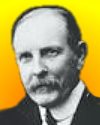 |  Arthur Edwin Kennelly (1861-1939) was an Irish-American electrical engineer who was a prominent contributor to the science of electrical engineering. For six years he worked for Thomas Edison at West Orange Laboratory, then branched out as a consultant. Upon his co-discovery of the radio reflecting properties of part of the upper atmosphere, the stratum was called the Kennelly-Heaviside layer. Arthur Edwin Kennelly (1861-1939) was an Irish-American electrical engineer who was a prominent contributor to the science of electrical engineering. For six years he worked for Thomas Edison at West Orange Laboratory, then branched out as a consultant. Upon his co-discovery of the radio reflecting properties of part of the upper atmosphere, the stratum was called the Kennelly-Heaviside layer.  In which atmospheric layer is this found? In which atmospheric layer is this found? |
| Events | |
 |  On 18 Jun 1993, the first lab test was released in Arizona confirming a cartain type of bee was involved in a fatal on attack on a small dog at a Tucson home. Because of their more intense defensive swarming behaviour, such non-native bees earned the name "killer bee" in the media. Arizona was the second state to be invaded, less than three years after this species spread north into Texas from Mexico. Since the fifties, the bees had extended their range northward through Central America. Their original source was from cross-breeding with bees imported into Brazil for experimental work. On 18 Jun 1993, the first lab test was released in Arizona confirming a cartain type of bee was involved in a fatal on attack on a small dog at a Tucson home. Because of their more intense defensive swarming behaviour, such non-native bees earned the name "killer bee" in the media. Arizona was the second state to be invaded, less than three years after this species spread north into Texas from Mexico. Since the fifties, the bees had extended their range northward through Central America. Their original source was from cross-breeding with bees imported into Brazil for experimental work. From where were the bees imported to Brazil for the cross-breeding (the country which gives the "killer bee" another name by which it is known)? From where were the bees imported to Brazil for the cross-breeding (the country which gives the "killer bee" another name by which it is known)? |
 |  On 18 Jun 1965, the first large solid-fuel rocket - a Titan 3C - rocket was launched into orbit. Many military and NASA payloads have been put into orbit with the generations of this launch vehicle family. On 18 Jun 1965, the first large solid-fuel rocket - a Titan 3C - rocket was launched into orbit. Many military and NASA payloads have been put into orbit with the generations of this launch vehicle family. What are some of the benefits of solid-fuel over liquid-propellant rockets? What are some of the benefits of solid-fuel over liquid-propellant rockets? |
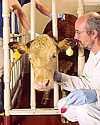 |  On 18 Jun of a certain year, the first genetically engineered vaccine was announced. It was designed to prevent hoof and mouth disease. On 18 Jun of a certain year, the first genetically engineered vaccine was announced. It was designed to prevent hoof and mouth disease. In what decade did this happen? In what decade did this happen? |
| Answers |
When you have your answers ready to all the questions above, you'll find all the information to check them, and more, on the June 18 web page of Today in Science History. Or, try this link first for just the brief answers. Fast answers for the previous newsletter for June 17: Wheaties; John Robert Gregg; the enzyme action involved; Amelia Earhart; the decade including the year 1950; PanAm. |
| Feedback |
 If you enjoy this newsletter, the website, or wish to offer encouragement or ideas, please send feedback by using your mail reader Reply button. If you enjoy this newsletter, the website, or wish to offer encouragement or ideas, please send feedback by using your mail reader Reply button. |
--
If you do not want to receive any more newsletters, Unsubscribe
To update your preferences and to unsubscribe visit this link


Δεν υπάρχουν σχόλια:
Δημοσίευση σχολίου